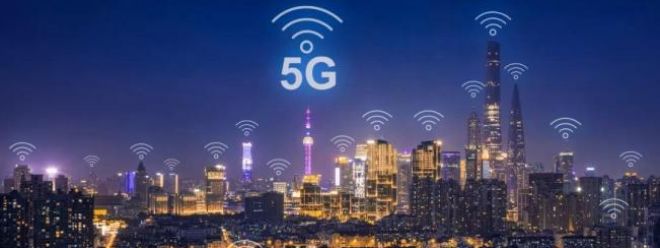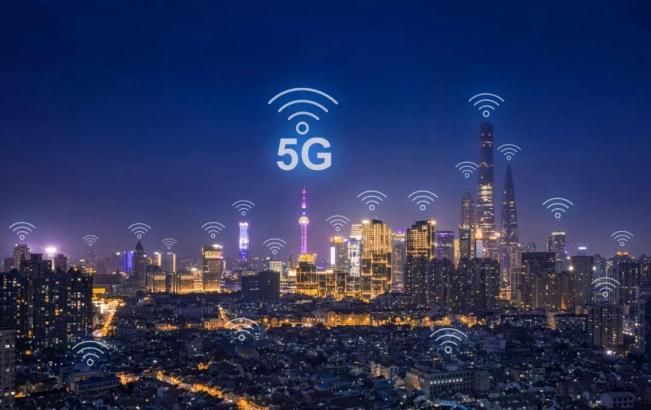5G innovation boosts green and low-carbon development

Energy saving is the key support for achieving the goal of "carbon peaking and carbon neutrality". The accelerated development of new-generation information technologies such as 5G has provided networked, digital, and intelligent technical means for the green development of the economy and society, and has become an important engine for promoting social energy conservation and emission reduction.

In the three years since the issuance of 5G licenses in my country, the commercial use of 5G has developed rapidly. The integration of 5G and other ICT technologies has achieved initial results in the digital transformation of thousands of industries. 5G accelerates the digitization process of all walks of life and promotes energy conservation and emission reduction in the whole society. It also urgently needs to move towards green and low carbon. The energy consumption per bit of 5G is 1/5 of that of 4G, but the peak rate has increased by 20 times. The overall energy consumption of 5G network is higher than that of 4G, and the high power consumption and cost of 5G base stations are widely concerned. According to GSMA data, the energy consumption cost (electricity fee) of the communication network accounts for 20%~40% of the operator's operating expenditure (OPEX). Under my country's "dual carbon" goal, 5G energy conservation and emission reduction is imminent, and it is urgent to accelerate the research on 5G network energy conservation technology and explore the green development path of 5G network.
Build green 5G with "soft and hard"
5G is not a "born electric tiger". Its power consumption per bit is 80% lower than that of 4G. However, as communication operators increase the construction of 5G base stations, the number of 5G base stations has increased significantly, and the data traffic has exploded. The overall power consumption is 4G base stations. 2.5~3.5 times of . "The main energy consumption of mobile operators lies in the wireless access network, that is, the wireless base station. Industry research shows that due to the huge number of base stations, the energy consumption of the wireless access network may reach about 70% of the energy consumption of the entire network." Yang Guang, a senior analyst in the field of wireless communications at SA, said in an interview with reporters.
According to Liu Qiang, director of the Energy Teaching and Research Office of the Institute of Quantitative and Technological Economics of the Chinese Academy of Social Sciences, 5G is currently in the stage of large-scale construction. The 5G network is not only the connection between people, but also extends to the connection between people and things and things , so the increase in energy consumption of 5G is naturally very significant. Liu Qiang said: "In addition to the energy consumption of wireless networks, core networks, transmission networks, data centers and other management and operations, infrastructure construction itself also has indirect energy consumption, such as steel, cement, etc., and the construction of base stations, computer rooms and other infrastructure also Indirect energy consumption will be generated. In addition, it is necessary to deal with 6G, Musk's 'Star Chain Plan', etc. or form a competitive situation with 5G, which may also bring about a sharp increase in energy consumption."
With the continuous advancement of mobile communication technology, multi-frequency and multi-standard networks will coexist for a long time. So how to help operators reduce network energy consumption on the basis of satisfying performance? Relevant experts pointed out that, first of all, it is necessary to introduce multi-frequency technology into wireless network. One device supports multiple frequency bands and realizes dynamic power sharing between frequency bands, which can greatly improve energy efficiency. Second, multi-antenna technology needs to be introduced. Through multi-antenna technology, the coverage capability of base stations can be greatly improved, the number of base stations can be reduced, and seamless comprehensive coverage can be achieved. In these ways, the energy consumption of the operator's network is reduced.
In view of the high energy consumption of 5G networks, the industry needs to strengthen research on energy-saving technologies to continuously reduce the energy consumption of equipment and networks. In this regard, experts from the Academy of Information and Communications Technology pointed out that according to the consensus of the industry, the industry generally adopts a three-level architecture at the equipment level, site level and network level to carry out research on key energy-saving technologies and related evaluation systems.
The key technologies of equipment-level energy saving include hardware energy saving and software energy saving. For example, in terms of 5G hardware, China Telecom has guided the industry chain to adopt new materials, new architectures, and improved integration to further reduce the basic power consumption of base stations; in terms of 5G software functions, it adopts symbol shutdown, carrier shutdown, channel shutdown, and Deep sleep and other methods continuously improve the refinement and intelligence level of software energy saving, and continuously reduce the operating power consumption of base stations.
The key technologies for site-level energy conservation are mainly aimed at the energy conservation of supporting facilities such as air conditioners and power supplies that constitute the site together with the main equipment. At present, the energy consumption of supporting facilities is reduced mainly by exploring the new wireless access network network architecture. For example, China Mobile cooperates with industry partners to develop high-efficiency materials, new devices, and new structures for base stations, so that the power consumption of a 5G single station is reduced by about 35% compared with the initial commercial use, which is close to 2.5 times that of 4G; energy-saving dynamic voltage regulation, BBU Exploration and verification of hibernation and pooling, realize the large-scale deployment and performance optimization of energy-saving functions such as sub-frame silence, channel silence, shallow sleep, and deep sleep, perform 5G base station device sleep based on service load, and achieve 10% power saving in low-load scenarios ~30%, and the power saving is more than 50% in extremely low load scenarios.
"The supporting equipment of base stations, such as air conditioners, is also often a large energy consumer. By adopting new system design, new heat dissipation design, etc., the requirements for the operation of the base station on the ambient temperature can also be reduced, thereby reducing the energy consumption of air conditioners." Yang Guang said .
The key technology of network-level energy saving is to carry out multi-network cooperation by combining artificial intelligence algorithms. Network-level energy-saving technology is closely related to network operation. Through data collection and big data processing on the network management side, it can automatically identify coverage cells and capacity cells in the state of multi-frequency and multi-mode networks, and perform timely cell muting and wake-up, which can effectively achieve the effect of energy saving. .
"It is necessary to consider the overall network energy consumption from the perspective of the network. For example, the volatility of network service traffic can be used. During the low business period, under the premise of ensuring network coverage, properly shutting down some carriers or even shutting down some base stations can significantly reduce the network. Energy consumption. In addition, realizing the replacement of old and new equipment as soon as possible is also conducive to improving network energy efficiency. The energy efficiency of new 4G and 5G base stations is much higher than that of old 2G and 3G base stations. The energy efficiency of the whole network." Yang Guang said. For example, in order to reduce the energy consumption of 5G base stations and realize large-scale commercial use, China Unicom proposed a "deep sleep" energy-saving algorithm and system-level intelligent energy-saving technology. After three years of hard work, compared with the initial stage of 5G construction, China Unicom has achieved a 60% reduction in 5G idle energy consumption and a 30% reduction in comprehensive energy consumption, making 5G base stations initially capable of large-scale commercial use.
Energy saving and emission reduction is a systematic project
The GSMA's "Mobile Net Zero Emissions Report 2022" recently released shows that although mobile network data traffic increased by 31% last year, the related carbon emissions increased by only 2%. This means that the industry has achieved phased results in green and low-carbon mobile communication networks.
Energy conservation and emission reduction is a systematic project, involving various measures, and it depends on the joint efforts of the entire industry and even the whole society. Many companies, including Huawei, ZTE, CITIC Mobile, Ericsson, Nokia, etc., are helping operators to save energy and reduce consumption at the component level, device level, network level and other levels, and continue to make new progress.
"Reducing energy consumption is an issue of the whole industry chain, which requires the joint efforts of operators, system equipment manufacturers, component manufacturers, and even power supply, air conditioner and other supporting manufacturers. While reducing energy consumption, it can also expand the application scope of new energy. , and more use of renewable energy such as solar energy and wind energy to power network equipment will also help to achieve the goal of reducing carbon emissions." Yang Guang suggested.
At present, "carbon peaking and carbon neutrality" has become the consensus of the whole society. It is the social responsibility that telecom operators must undertake to improve network energy efficiency and reduce carbon emissions. On the other hand, energy consumption cost is also an important part of network operation cost. With the continuous growth of data traffic carried by the network, improving energy efficiency will help operators control costs and improve profitability. Therefore, whether from the perspective of commercial operation or social responsibility, energy saving and consumption reduction are of great significance to the sustainable development of operators.